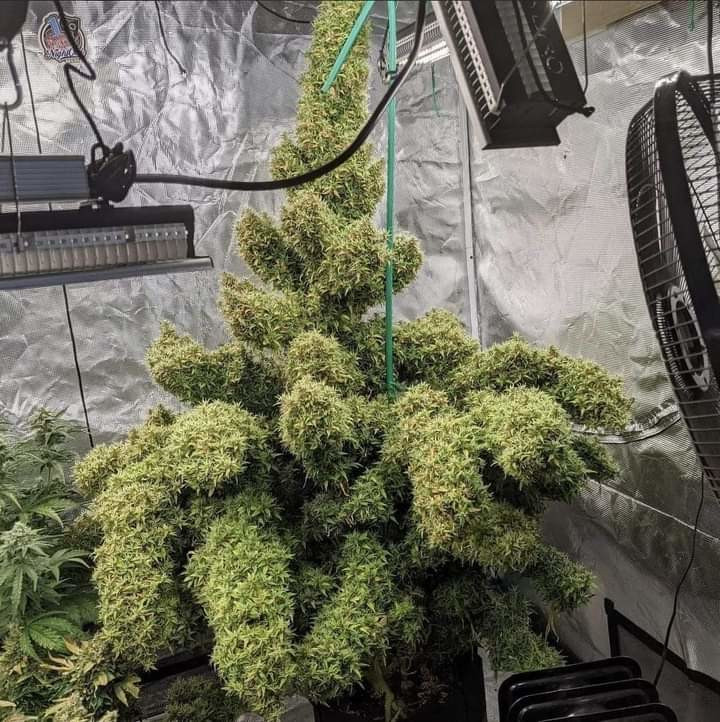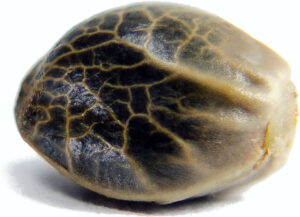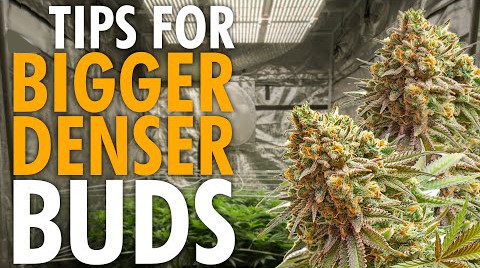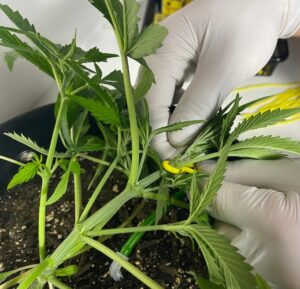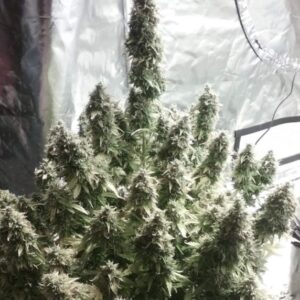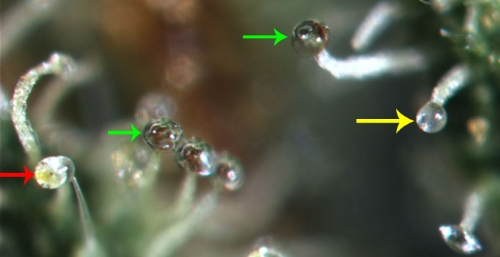How to Cultivate Massive Buds: Tips and Techniques for Cannabis Growers
As cannabis legalization spreads across the globe, more and more individuals are taking up the rewarding hobby of growing their own cannabis plants. However, many growers face the challenge of producing large, dense buds. In this comprehensive guide, we will explore the best techniques for cultivating bigger buds, both indoors and outdoors. From genetics to harvesting, we will cover every step of the process to help you achieve impressive yields.
Table of Contents
- Genetics – Laying the Foundation for Big Buds
- Quick Tips and Techniques for Bigger Buds
- Supplement with Carbohydrates
- Utilize Amino Acids
- Avoid Plant Growth Regulators (PGRs)
- Maintain Proper Humidity Levels
- Manipulating Growth with Low Stress Training (LST)
- Canopy Airflow – Creating the Ideal Environment for Bud Growth
- Light Intensity – Maximizing Photosynthesis for Bigger Buds
- Nutrients – Fueling Bud Growth with Proper Feeding
- Nutrient Requirements in Different Growth Stages
- Flowering Stage – Maximizing Bud Growth and Potency
- Avoiding Nutrient Deficiencies and Maintaining pH Balance
- Conclusion
Genetics – Laying the Foundation for Big Buds
When it comes to growing cannabis, genetics play a crucial role in determining the size, density, and potency of the buds. The genetic makeup of a plant determines various characteristics, including flowering times, leaf shape, terpene profiles, and cannabinoid production. Therefore, selecting the right seeds is essential for achieving desirable results.
To maximize the potential for big buds, it is crucial to choose high-quality seeds from reputable breeders. Avoid cheap or unknown seeds, as they often produce weak and low-yielding plants. Strains with stable genetics are preferable to ensure consistent outcomes. Conduct thorough research to identify strains with proven genetics that are known for producing large, dense buds.
Quick Tips and Techniques for Bigger Buds
In addition to the major techniques discussed further down in the article, here are some quick tips and techniques to enhance bud growth:
1. Supplement with Carbohydrates
In the pursuit of bigger buds, supplementing your cannabis plants with carbohydrates can make a significant difference. Sugar-based additives, rich in carbohydrates, serve as an energy source, fueling the metabolic processes essential for robust bud growth. These formulas not only provide the necessary energy but also contribute to the overall density of the buds. Additionally, carbohydrate formulas play a crucial role in enhancing the flavor and aroma profile of your cannabis flowers.
Beyond their direct impact, carbohydrate supplements foster a thriving microbial community in the root zone. Beneficial microorganisms break down organic matter in the soil, facilitating nutrient absorption. This symbiotic relationship not only ensures healthier plants but also translates into larger, more potent buds during the flowering stage.
2. Utilize Amino Acids
Amino acids, often regarded as the building blocks of life, play a pivotal role in the growth and development of cannabis plants. These organic compounds are the foundation upon which proteins, enzymes, and hormones are synthesized. When applied as a supplement, amino acid blends provide plants with the essential constituents necessary for cellular processes, leading to increased bud density.
Moreover, amino acids act as stress relievers for plants. By bolstering the plant’s resilience to environmental stressors and diseases, amino acid supplements pave the way for unhindered growth and development. The strengthened defense mechanisms not only ensure healthier plants but also translate into higher yields and denser buds.
3. Avoid Plant Growth Regulators (PGRs)
While the market offers a variety of bud hardeners and plant growth regulators (PGRs) promising enhanced bud size, their use raises significant concerns. PGRs, often laden with synthetic chemicals, can compromise both the plant’s health and the safety of consumers. These regulators might induce rapid but unnatural growth, leading to structural weaknesses in the plant.
The potential harm caused by PGR-contaminated buds to human health cannot be overstated. It’s imperative to prioritize natural and organic cultivation methods, steering clear of artificial shortcuts. By relying on time-tested and organic techniques, growers can ensure the integrity of their plants and the well-being of those who consume the final product.
4. Maintain Proper Humidity Levels
VPD Chart for Cannabis
| Growth Stage | Temperature (°F) | Humidity (%) | Lights on Optimal VPD Range (kPa) | Lights off Optimal VPD Range (kPa) |
|---|---|---|---|---|
| Seedling | 68-77 | 70-75 | 0.3-0.7 | 0.2-0.5 |
| Vegetative | 70-85 | 40-70 | 0.8-1.2 | 0.6-1.0 |
| Early Flower | 70-78 | 40-50 | 1.0-1.5 | 0.8-1.2 |
| Mid Flower | 68-75 | 40-50 | 1.2-1.7 | 1.0-1.5 |
| Late Flower | 65-72 | 40-50 | 1.5-1.8 | 1.2-1.7 |
| Pre-Harvest | 60-68 | 40-50 | 1.2-1.8 | 1.0-1.5 |
Humidity levels during the flowering stage are critical factors influencing bud development. High humidity creates a breeding ground for mold and mildew, threatening the integrity of your precious buds. On the contrary, low humidity levels induce stress in plants, hindering their growth potential.
To strike the ideal balance, aim for a humidity range of 40-50% during the flowering stage. Maintaining this optimal environment provides your cannabis plants with the conditions they need to thrive. Proper humidity levels ensure that your plants are neither excessively stressed nor vulnerable to harmful pathogens, allowing them to focus their energy on producing large, resinous buds.
Manipulating Growth with Low Stress Training (LST)
Controlling the growth of cannabis plants is key to achieving big buds. Low Stress Training (LST) is a popular technique that involves gently bending and training the branches of the plant to promote even growth and maximize bud development.
Implementing LST during the vegetative stage allows growers to manipulate the plant’s growth through bending and pruning, rather than harsh cutting or topping. By training the branches to grow horizontally and creating an even canopy, LST ensures that all parts of the plant receive sufficient light and nutrients, resulting in more bud sites and a higher overall yield.
It is important to start LST when the branches are still flexible, typically around 10 inches in height. Gently bend the branches away from the center of the plant and secure them using soft wires or strings. By redistributing the plant’s hormones, LST encourages lateral growth and creates more opportunities for bud development.
Canopy Airflow – Creating the Ideal Environment for Bud Growth
| Grow Room Fan Requirements | ||
|---|---|---|
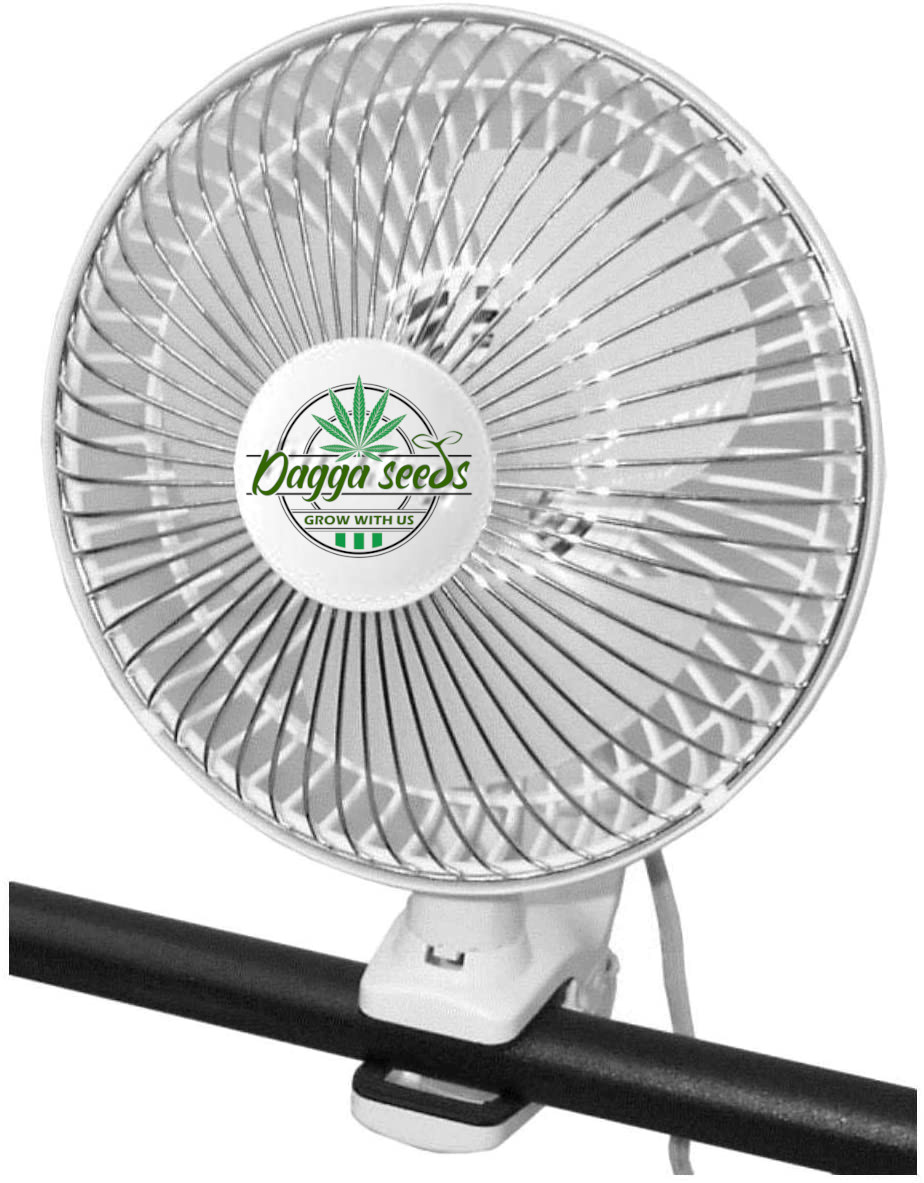 | Smaller than 2 ft square | 1 X ø15cm / 6 inch 5W |
 | 3 ft X 3 Ft | 2 X ø15cm / 6 inch 5W Blowing at each other |
 | 4 ft X 4 ft | 3X ø15cm / 6 inch 5W (or) 2X ø25cm / 10 inch (20W) (on low level) |
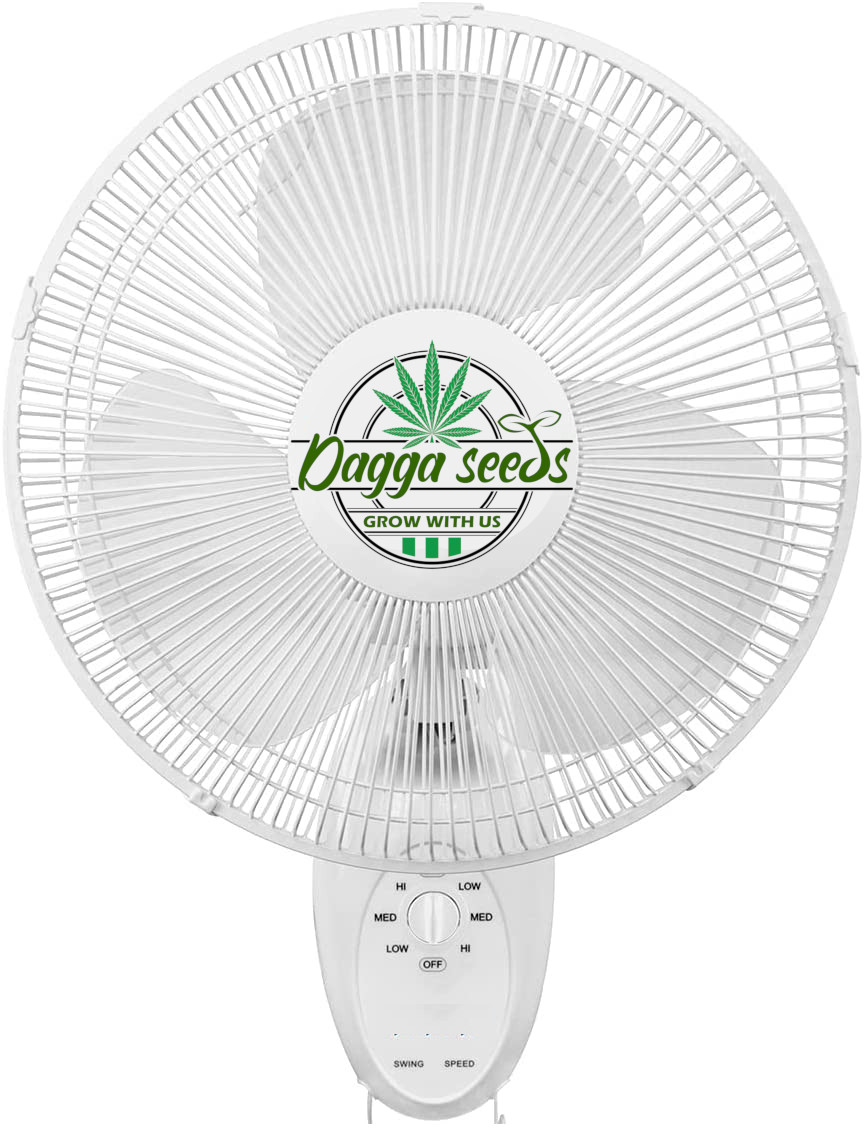 | 5ft X 5 Ft | 4X ø15cm / 6 inch 5W or 2X ø25cm / 10 inch (20W) |
 | 6-8 ft X 6-8 ft | 3x ø25cm / 10 inch (20W) |
 | 10-16 ft X 10-16 ft | 2x swivel Wall mount fan ø40cm 16 inch |
 | Larger than 16 Ft | 4x FlatFan 50cm 20 inch |
A well-ventilated canopy is crucial for the health and development of cannabis plants. Proper airflow helps prevent the buildup of moisture, which can lead to mold and mildew. Additionally, it ensures that plants receive adequate carbon dioxide (CO2) for photosynthesis, resulting in increased energy production and bigger, denser buds.
To optimize canopy airflow, it is important to provide enough space between plants. Overcrowded plants compete for resources, such as light, water, and nutrients, leading to stunted growth and smaller buds. When growing indoors, ensure adequate space between plants and the walls of the grow room to allow air to circulate freely.
Investing in high-quality circulation fans can further improve airflow within the grow room. Strategically placing fans ensures that fresh air reaches all parts of the canopy, including the top where the buds are developing. Be sure to choose reliable fans with positive reviews to avoid issues with low-quality parts or loose wires.
Light Intensity – Maximizing Photosynthesis for Bigger Buds
Light is one of the most critical factors for cannabis growth and bud development. Providing the right amount and intensity of light is crucial for achieving large, dense buds. Cannabis plants thrive under high levels of light, with optimal photosynthetic photon flux density (PPFD) ranging from 950 to 1,200 in full bloom.
When growing indoors, it is essential to invest in high-quality LED grow lights that emit the appropriate spectrum for cannabis growth. LED lights are energy-efficient and can be customized to provide the optimal light intensity and spectrum for each stage of plant growth. Ensure that the lights are positioned at the correct distance from the canopy to prevent light burn while maximizing light absorption.
For outdoor cultivation, take advantage of natural sunlight by selecting an optimal location for your plants. Choose a spot with ample sunlight exposure throughout the day, avoiding areas with excessive shade. Consider utilizing reflective materials or light-reflecting mulch to enhance light penetration and distribution within the canopy.
Nutrients – Fueling Bud Growth with Proper Feeding
To produce big, bountiful buds, cannabis plants require a balanced and nutrient-rich diet. Nutrients such as nitrogen (N), phosphorus (P), and potassium (K) play crucial roles in various stages of plant growth and bud development.
TDS and EC levels for cannabis plants at each week of vegetative growth, followed by the first few weeks of flowering:
| Week of Growth | TDS Levels | EC Levels |
|---|---|---|
| 1 Vegetative | 100-250 ppm | 0.2-0.5 mS/cm |
| 2 Vegetative | 250-350 ppm | 0.5-0.7 mS/cm |
| 3 Vegetative | 350-500 ppm | 0.7-1.0 mS/cm |
| 4 Vegetative | 500-700 ppm | 1.0-1.4 mS/cm |
| 5 (early flowering) | 700-900 ppm | 1.4-1.8 mS/cm |
| 6 (early flowering) | 800-1000 ppm | 1.6-2.0 mS/cm |
| 7 (mid flowering) | 900-1100 ppm | 1.8-2.2 mS/cm |
| 8 (mid flowering) | 1000-1200 ppm | 2.0-2.4 mS/cm |
| 9 (late flowering) | 1100-1300 ppm | 2.2-2.6 mS/cm |
| 10 (late flowering) | 1200-1400 ppm | 2.4-2.8 mS/cm |
| 11 (late flowering) | 1300-1500 ppm | 2.6-3.0 mS/cm |
| 12 (ripening/harvest) | <1000 ppm | <2.0 mS/cm |
During the early stages of growth, nitrogen is essential for promoting strong vegetative growth. Adequate nitrogen levels enable plants to establish a healthy foundation, ensuring robust growth and the potential for larger flowers later on. However, as the plant transitions to the flowering stage, nitrogen requirements decrease, and phosphorus becomes more important.
Phosphorus plays a vital role in bud development, contributing to the size, weight, and density of the flowers. It is crucial to provide cannabis plants with the appropriate nutrients at each stage of growth, adjusting the nutrient ratios to meet the plant’s changing needs.
Using composts and organic amendments can help improve soil quality and provide a steady release of nutrients throughout the growing season. Starting with high-quality soil is essential, as it forms the foundation for healthy plant growth. Consider using living organic soils such as Fox Farm, which are specifically formulated to provide the ideal environment for cannabis cultivation.
Flowering Stage – Maximizing Bud Growth and Potency
The flowering stage is a critical period in the cannabis life cycle when buds begin to form and mature. Creating the optimal environment during this stage is crucial for maximizing bud growth and potency.
Maintaining the appropriate temperature and humidity levels is essential during the flowering stage. Aim for temperatures between 68-77°F (20-25°C) during the day and 58-70°F (14-21°C) at night. Additionally, maintain relative humidity levels around 40-50% to prevent issues such as mold and mildew.
Proper lighting during the flowering stage is crucial for optimal bud development. Most cannabis strains require 12 hours of uninterrupted darkness followed by 12 hours of light to induce the flowering stage. Ensure that the light intensity and spectrum are suitable for flowering to maximize photosynthesis and bud growth.
Monitoring and adjusting pH levels is essential during the flowering stage to ensure nutrient availability. Maintain a pH range of 5.5-6.5 to optimize nutrient uptake by the roots. Regularly test the pH of the nutrient solution and adjust as needed using pH up or down solutions.
Harvesting – Timing and Techniques for Maximum Yield
Harvesting cannabis at the right time is crucial for achieving maximum yield and potency. Timing the harvest accurately ensures that the buds have reached their peak level of cannabinoid production and are at their most potent.
The trichomes, resinous glands on the buds, provide valuable insights into the plant’s readiness for harvest. Use a magnifying glass or jeweler’s loupe to examine the trichomes. When they are around 50-70% milky white and 30-50% amber, it is generally the optimal time to harvest. At this stage, the buds are at their peak potency, providing a balance between psychoactive effects and therapeutic benefits.
When harvesting, use clean and sharp pruning shears to avoid damaging the buds. Begin by cutting the main stem at the base and then trim away any excess leaves and stems from the buds. This process, known as trimming, helps remove unwanted plant material that can affect the quality of the buds.
After trimming, it is important to dry the buds properly to preserve their potency and flavor. Hang them upside down in a cool, dark, and well-ventilated area for approximately a week. This slow drying process allows the buds to retain their quality and avoid mold or mildew issues.
Curing the buds after drying is another essential step. Place the dried buds in airtight containers and store them in a cool, dark place. This curing process allows the buds to continue drying slowly and enhances their flavor, aroma, and overall quality. Curing can take several weeks, but the patience is worth the reward of potent and flavorful buds.
Avoiding Nutrient Deficiencies and Maintaining pH Balance
| Nutrient | Description | pH Range for Optimal Absorption |
|---|---|---|
| Nitrogen | An essential macronutrient that is important for vegetative growth and overall plant health. | 6.0-7.0 |
| Phosphorus | Another essential macronutrient that is important for flower development and root growth. | 6.0-7.0 |
| Potassium | A macronutrient that helps regulate water balance in plants and is important for flower development. | 6.0-7.0 |
| Calcium | A macronutrient that is important for cell wall development and overall plant structure. | 6.0-7.0 |
| Magnesium | A macronutrient that is important for chlorophyll production and overall plant growth. | 6.0-7.0 |
| Sulfur | A macronutrient that is important for protein synthesis and overall plant health. | 6.0-7.0 |
| Iron | A micronutrient that is important for chlorophyll production and overall plant growth. | 6.0-6.5 |
| Manganese | A micronutrient that is important for photosynthesis and enzyme activation. | 5.5-6.5 |
| Zinc | A micronutrient that is important for enzyme activation and overall plant growth. | 5.5-7.0 |
| Copper | A micronutrient that is important for chlorophyll production and overall plant growth. | 5.5-6.5 |
| Boron | A micronutrient that is important for cell wall development and overall plant health. | 5.0-6.0 |
| Molybdenum | A micronutrient that is important for nitrogen fixation and overall plant growth. | 6.0-7.0 |
Nutrient deficiencies and imbalanced pH levels can hinder the growth of cannabis plants and result in smaller buds. It is important to monitor nutrient levels and pH balance to ensure optimal plant health and maximize bud development.
Nitrogen, phosphorus, and potassium deficiencies are common issues that can affect cannabis growth. Nitrogen deficiency can cause yellowing of leaves and stunted growth, while phosphorus and potassium deficiencies can impact bud development. Regularly inspect plants for any signs of nutrient deficiencies and adjust nutrient solutions accordingly.
Maintaining the correct pH levels of the growing medium is crucial for nutrient absorption. Cannabis plants prefer a pH range between 5.5-6.5. Test the pH levels of the soil or hydroponic solution regularly and adjust using pH up or down solutions as needed. Proper pH balance ensures that nutrients are accessible to the plants, promoting healthy growth and maximizing bud size.
Conclusion
Cultivating massive buds requires a combination of genetic selection, proper training techniques, optimal environmental conditions, and nutrient management. By selecting high-quality genetics, employing low stress training, ensuring proper airflow and lighting, providing the right nutrients, and timing the harvest correctly, growers can significantly enhance their yields and produce impressive buds.
Remember to monitor pH levels, address nutrient deficiencies promptly, and avoid the use of harmful plant growth regulators. Incorporate additional techniques such as supplementing with carbohydrates and amino acids to further enhance bud size and density.
By implementing these tips and techniques, cannabis growers can maximize their harvests and enjoy the satisfaction of cultivating impressive, high-quality buds. Happy growing!


